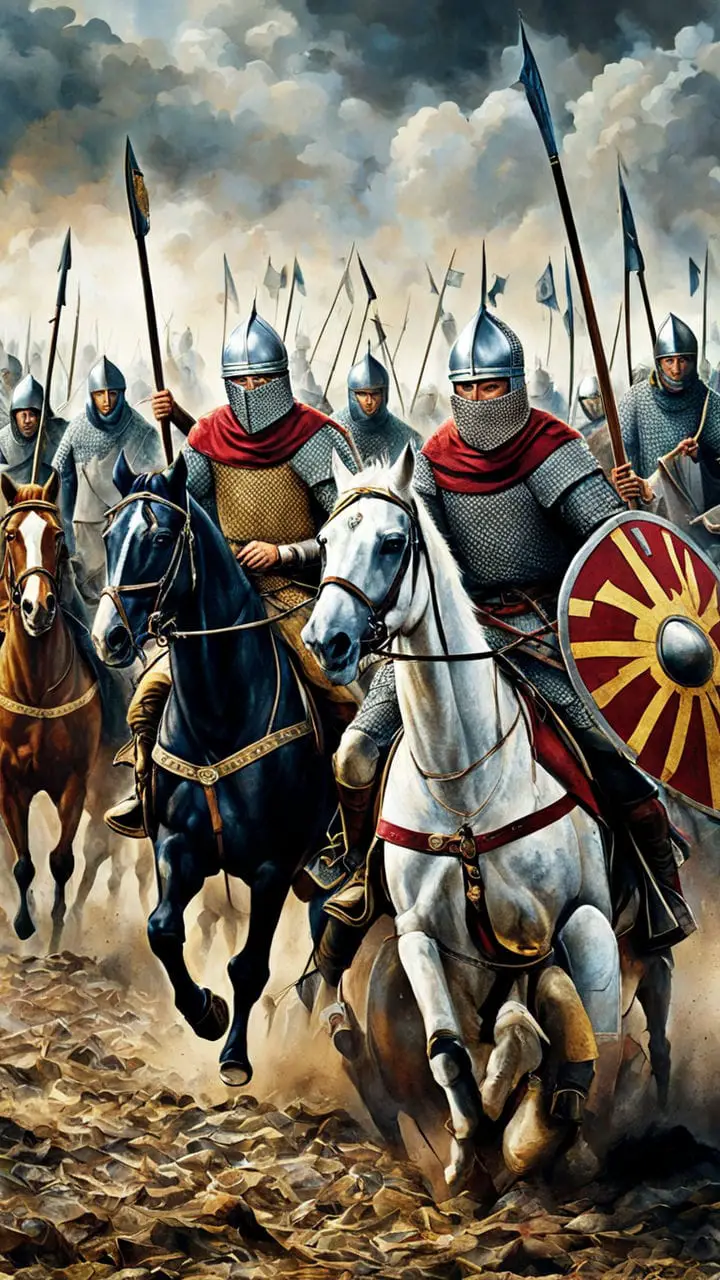The Battle of Hastings: Turning Point in English History (1066)

The Battle of Hastings was a pivotal event in English history that marked the beginning of the Norman Conquest of England. The battle was fought on 14 October 1066 between the Norman-French army of William, Duke of Normandy, and an English army under the Anglo-Saxon King Harold Godwinson.
The battle was a decisive Norman victory, and it led to the conquest of England by the Normans.
The Events Leading Up to the Battle of Hastings
The events that unfolded on the battlefield ultimately decided the fate of England. The English army, composed almost entirely of infantry and with few archers, faced off against the invading force, which was split equally between infantry, cavalry, and archers.
Harold's attempt to surprise William was thwarted by scouts, who reported the English army's arrival to the Norman leader.
The battle commenced around 9 am and lasted until dusk, with the Normans initially struggling to break through the English lines. In response, they adopted the tactic of feigning retreat, only to turn on their pursuers, catching them off guard.
This strategy proved effective, and Harold's death, likely near the end of the battle, marked a decisive turning point. As the English army retreated and was defeated, William's path to the throne was all but secured.
The Battle of Hastings

The English army's decision to rush to Hastings proved costly as it did not allow them to adequately prepare for battle, with some historians believing they arrived the night before. Harold, having defeated his other challengers just days earlier at Stamford Bridge, hastily marched 240 miles to confront William's army at Hastings, in an attempt to protect the realm.
In the hours before the battle the Normans lined up at the crest of a low ridge a few miles north of Hastings.
With no standing army in place to fight a traditional defensive war the Anglo Saxon housecarls lined up with shield walls with an extremely deep and narrow front line as deep as twenty men deep with perhaps the odd reserve troops for cover with this compact housecarl force giving very strong defences as shields held a five to six feet length long so at times many a battle shields held next to one another stretched about seven to eight feet from left to right that resulted in not having gaps within any formation made them much less exposed from projectile.
The Aftermath of the Battle of Hastings

Battle of Hastings aftermath and the history following it as per english historians estimate about William rule post Hastings including all information relevant about this, consider looking in section History following and Casualty and Capture. Check results looking on subchapters Battle Aftermath
Conclusions
The Battle of Hastings was a turning point in English history, marking the beginning of the Norman Conquest of England. The battle was a decisive Norman victory, and it led to the conquest of England by the Normans.
The battle had a profound impact on English society, culture, and politics, and it shaped the course of English history for centuries to come.




